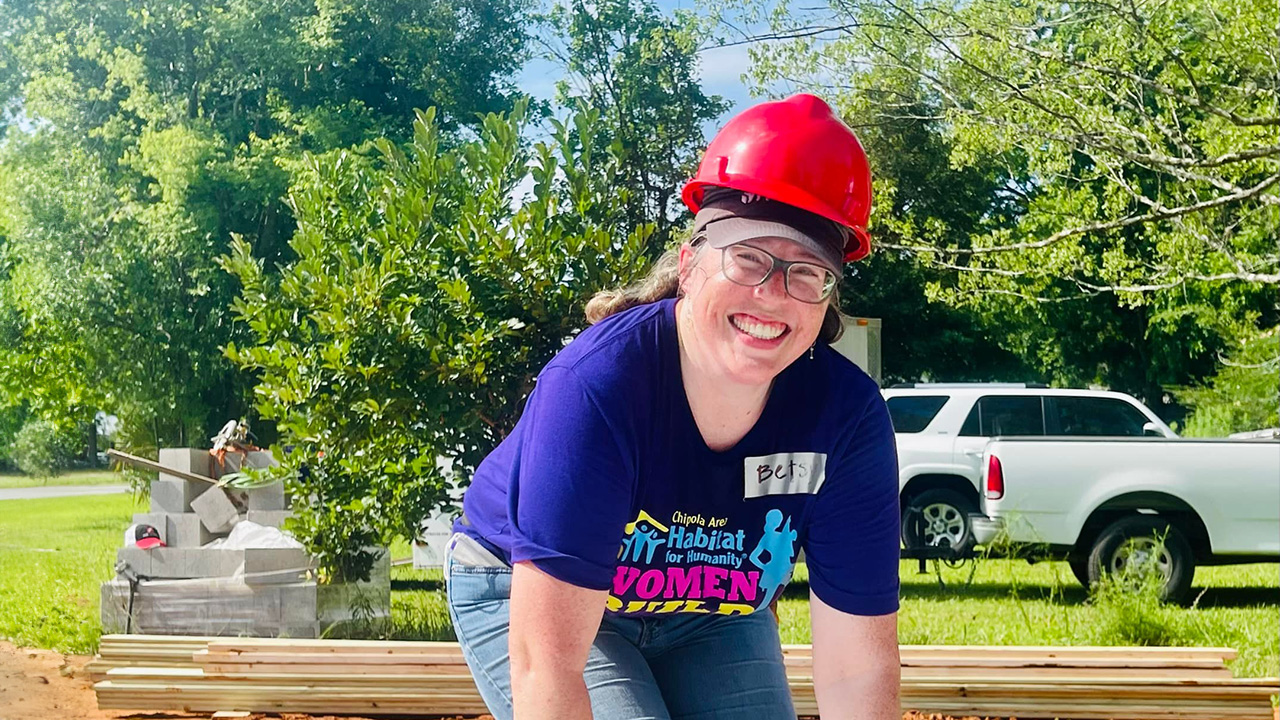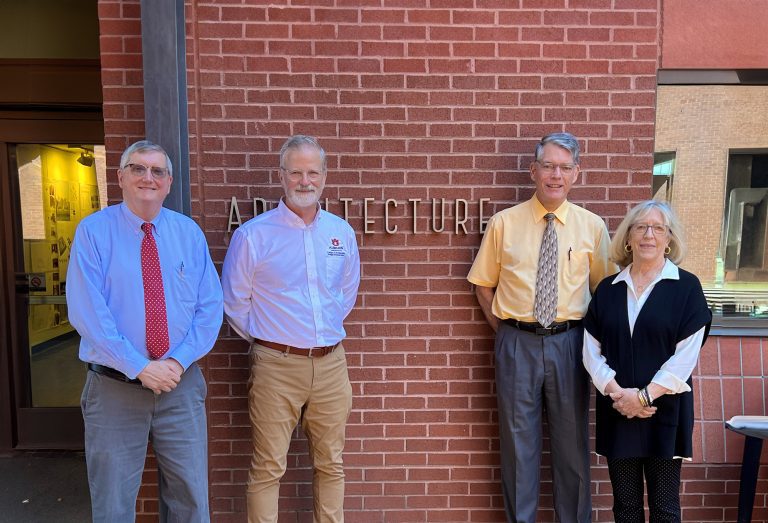content body
As a practicing architect in Massachusetts, Betsy Farrell Garcia never thought her next job would be calculating energy usage in affordable housing. But once she joined Auburn University’s Front Porch Initiative and realized the value of that data, she was hooked.
“When I got down here, I became very interested in the energy modeling aspect and the monitoring research our team is doing, and that’s where I have kind of nerded out,” she said.
Garcia is an assistant research professor and Extension specialist at Rural Studio, an off-campus design-build program in Auburn’s College of Architecture, Design and Construction located in Newbern, Alabama. She works on the Front Porch Initiative, a research-based outreach arm of Rural Studio that creates affordable and energy efficient housing design plans. The Front Porch team partners with community organizations around the country, many of which are Habitat for Humanity affiliates, that implement those designs.
The innovative housing design plans are initially generated by Rural Studio students and faculty. When a partner approaches them, Garcia and her colleagues modify the designs to fit each client’s needs, extending the impact of Rural Studio’s applied housing research far beyond west Alabama.
“We share the housing products developed at Rural Studio, modify them to incorporate the building codes of each locality and any beyond-code standards and provide them with the technical assistance to build to those standards,” Garcia said. “They build the house as a kind of test-and-learn process, and in some cases, we will go back to the folks in west Alabama and say, ‘Hey, this is what we’re hearing, what if we tried something else?’”
Garcia is a 2008 Auburn graduate who completed her fifth year of the architecture program at Rural Studio, where she and her classmates built the 20K Bridge Home. As part of Rural Studio’s 20K research, they were assigned to build a house with a budget of $20,000, the amount someone living on Social Security could afford.
“At the time, we assumed $12,000 for the materials and $8,000 for labor, so we took that to mean we had to make the homes as small as possible and be really thrifty with the materials we selected,” she said. “But eventually, Rural Studio realized that was not actually a benefit to the homeowners. By giving them a cheap home, they would end up paying more in utilities and insurance.”
After graduation, Garcia took a job in Massachusetts designing institutional and educational buildings, but that lesson about affordable homeownership stuck with her. She stayed in touch with former classmate Mackenzie Stagg, who had taken a position back in Alabama as an assistant research professor with the Front Porch Initiative. When Stagg told her they were expanding the team and urged Garcia to apply, she realized it was the right move.
“I never, ever imagined coming back, but those conversations with Mackenzie made me realize this would be a perfect fit,” Garcia said.
Now, Garcia works alongside Stagg, research architect Christian Ayala Lopez and Rural Studio Associate Director Rusty Smith. She specializes in incorporating energy efficiency into housing designs.
“I’m an architect, and I am used to reading building code, so generally when we get questions of code or need to do a code analysis, I’m typically the one that does it,” she said. “Rusty really sold me on this job, because he said we can show people the value of building better-quality homes.”
Garcia proves that value by monitoring the performance of the homes built by the organization’s partners. She’s currently most excited about collecting data from a homeowner in North Carolina who has two homes side by side, one older structure and the other a replacement built to higher energy standards. She also is studying a series of eight pairs of Habitat for Humanity homes in which one house is built to code and the other is built beyond code.
“The idea behind that is to study homes built to two different standards and then see how the construction of the house affects the utility consumption,” she said.
In addition to her research, Garcia is serving as a team leader on an all-women build for a Habitat for Humanity affiliate in Chipola, Florida, a town still recovering from Hurricane Michael’s direct hit in 2018. The organization is building four homes it hopes will earn Energy Star, FBGC Green Home and FORTIFIED for Home Hurricane Gold certifications. Garcia knows it can be more expensive to build homes to these standards, but she feels the decreased costs in homeownership are worth the initial investment.
“We know energy costs are only going to go up, and we’ve seen the writing on the wall that insurance costs are going up,” she said. “It costs so little in the initial construction to build a house stronger. If it saves you thousands of dollars in repairs after a disaster, to us, it just makes sense to build things more resiliently.”







